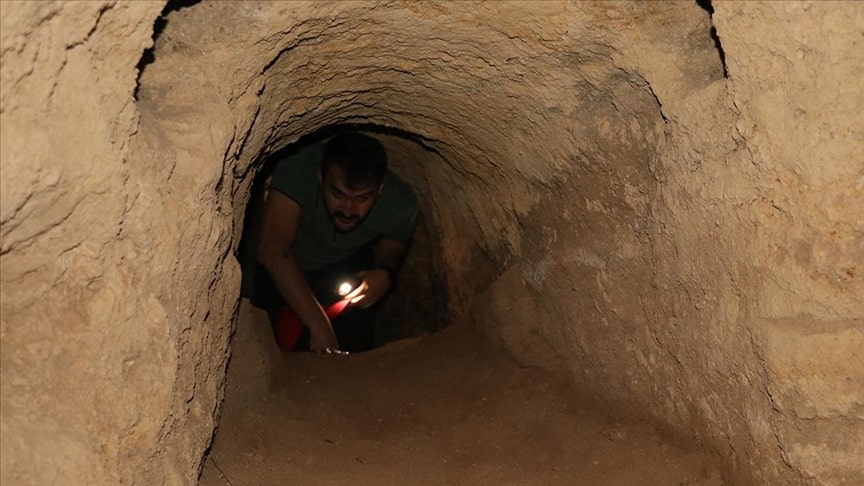
A 5500-year-old rock settlement was unearthed in Zeugma in the Black Sea
During the archaeological excavation works conducted in Hadrianopolis Ancient City in the Eskipazar district of Karabük, known as “The Zeugma of the Black Sea,” an underground rock settlement dating back 5500 years was discovered.
The discovery took place during the excavation and restoration work led by Associate Professor Dr. Ersin Çelikbaş, a faculty member in the Department of Archaeology at Karabük University’s Faculty of Arts and Sciences.
Hadrianopolis Ancient City, which was used as a settlement during the Late Chalcolithic, Roman, and Early Byzantine periods, is referred to as the “Zeugma of the Black Sea” due to the mosaics uncovered during excavations.

Ersin Çelikbaş stated to journalists, “We conducted our excavation work here this year as well. Our work is ongoing. We had heard before that this was a known place. When we arrived here, we reached a vaulted gallery and a hall. From there, we saw that the interior was heavily filled with soil. In fact, our excavation work started, in a sense, with the removal of this filling soil.”
Çelikbaş mentioned, “After removing the filling soil, we identified pathways leading to other galleries from the first hall. As we followed these galleries, we reached the second hall. In the second hall, we once again saw galleries branching off in different directions at three points. As the interior soil filling was removed, previously unknown galleries that were not visible to the naked eye began to emerge. We also observed that one of these galleries led to a large hall.”

Galleries may be lit with candles
Çelikbaş shared the following information, indicating their belief that the galleries might have been illuminated with candles:
“For us, the significance lies in the fact that this type of underground rock settlement is mostly associated with the cultural heritage of Cappadocia in Anatolia. The presence of such a rock settlement in a location in Western Karadeniz within the borders of Karabük, which we had never even considered, excited and surprised us. The results of the excavation work provided us with archaeological evidence that this rock settlement has been in use since the Chalcolithic period, approximately 5,500 years ago, and that people conducted settlement activities here. Of course, this place is not limited to just that period.

We have also come across several animal reliefs in these galleries. Therefore, we can say that people may have sustained their lives here. Additionally, we have not yet fully determined whether there is any religious connection to this place. We continue our research on this matter. We believe that further excavations will provide us with more data in this regard.”
Cover Photo Orhan Kuzu/AA
You may also like
- A 1700-year-old statue of Pan unearthed during the excavations at Polyeuktos in İstanbul
- The granary was found in the ancient city of Sebaste, founded by the first Roman emperor Augustus
- Donalar Kale Kapı Rock Tomb or Donalar Rock Tomb
- Theater emerges as works continue in ancient city of Perinthos
- Urartian King Argishti’s bronze shield revealed the name of an unknown country
- The religious center of Lycia, the ancient city of Letoon
- Who were the Luwians?
- A new study brings a fresh perspective on the Anatolian origin of the Indo-European languages
- Perhaps the oldest thermal treatment center in the world, which has been in continuous use for 2000 years -Basilica Therma Roman Bath or King’s Daughter-
- The largest synagogue of the ancient world, located in the ancient city of Sardis, is being restored











Leave a Reply